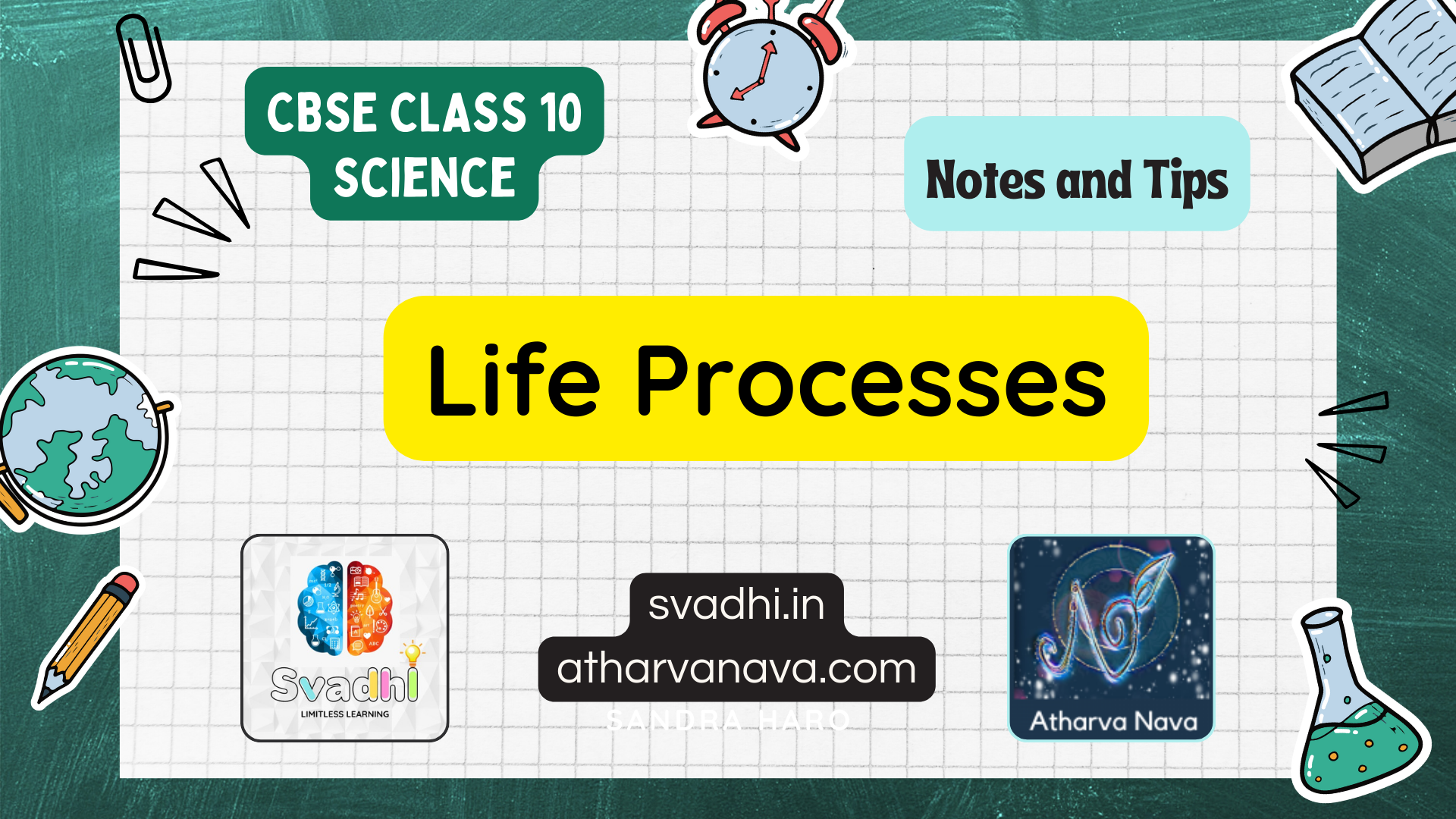
CBSE Class 10 Science – Chapter 6: Life Processes – Detailed Notes & Explanation
Introduction What is living ? ‘Living’ is something that is alive, something that can grow, move, reproduce, respire, made up of cells and are capable of carrying out various cellular […]
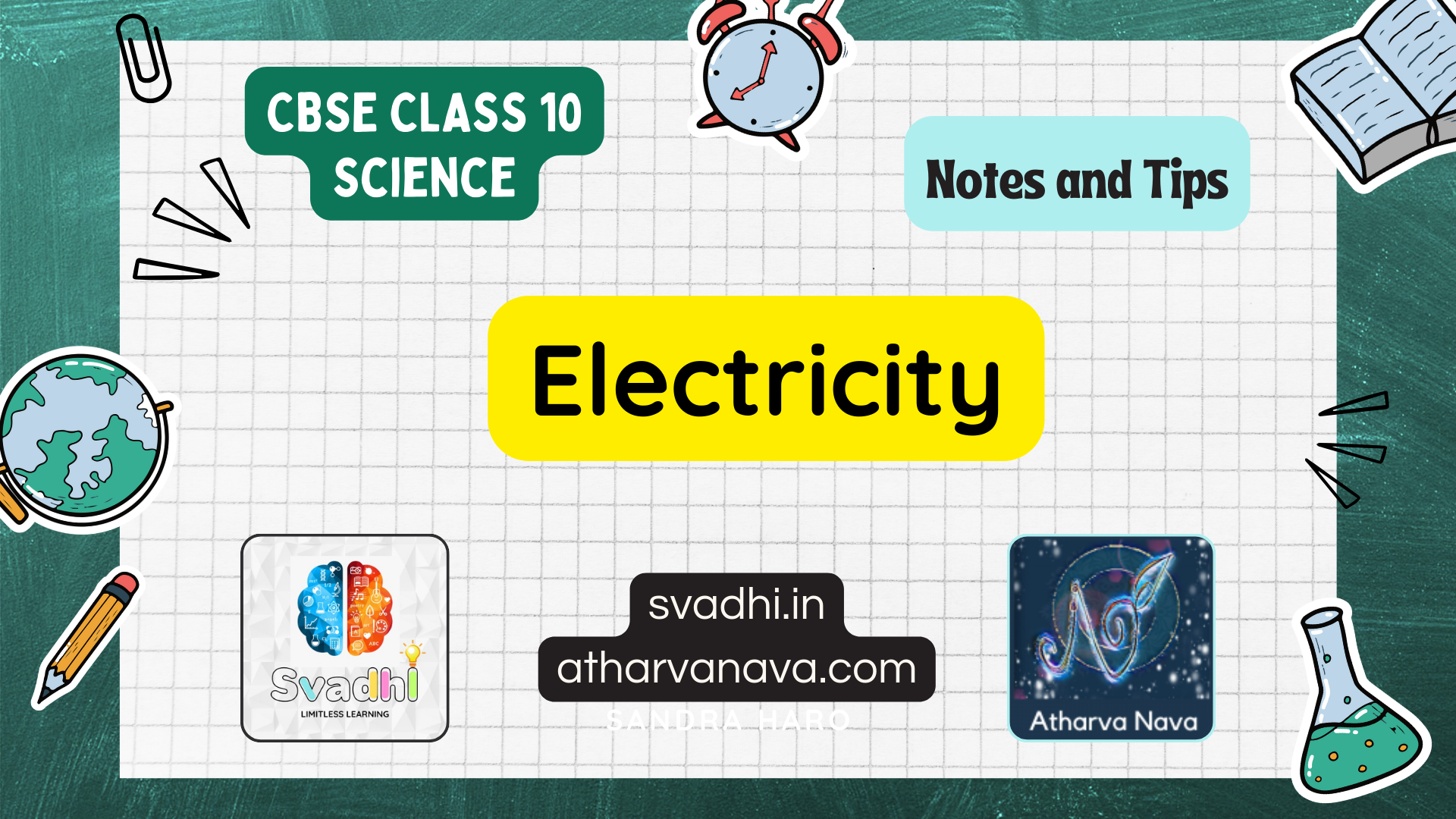
CBSE Class 10 Science – Chapter 12: Electricity – Detailed Notes & Explanation
Electric Current: Electric current is the rate of flow of electric charge from a body at higher potential to a body at lower potential. where n is the […]
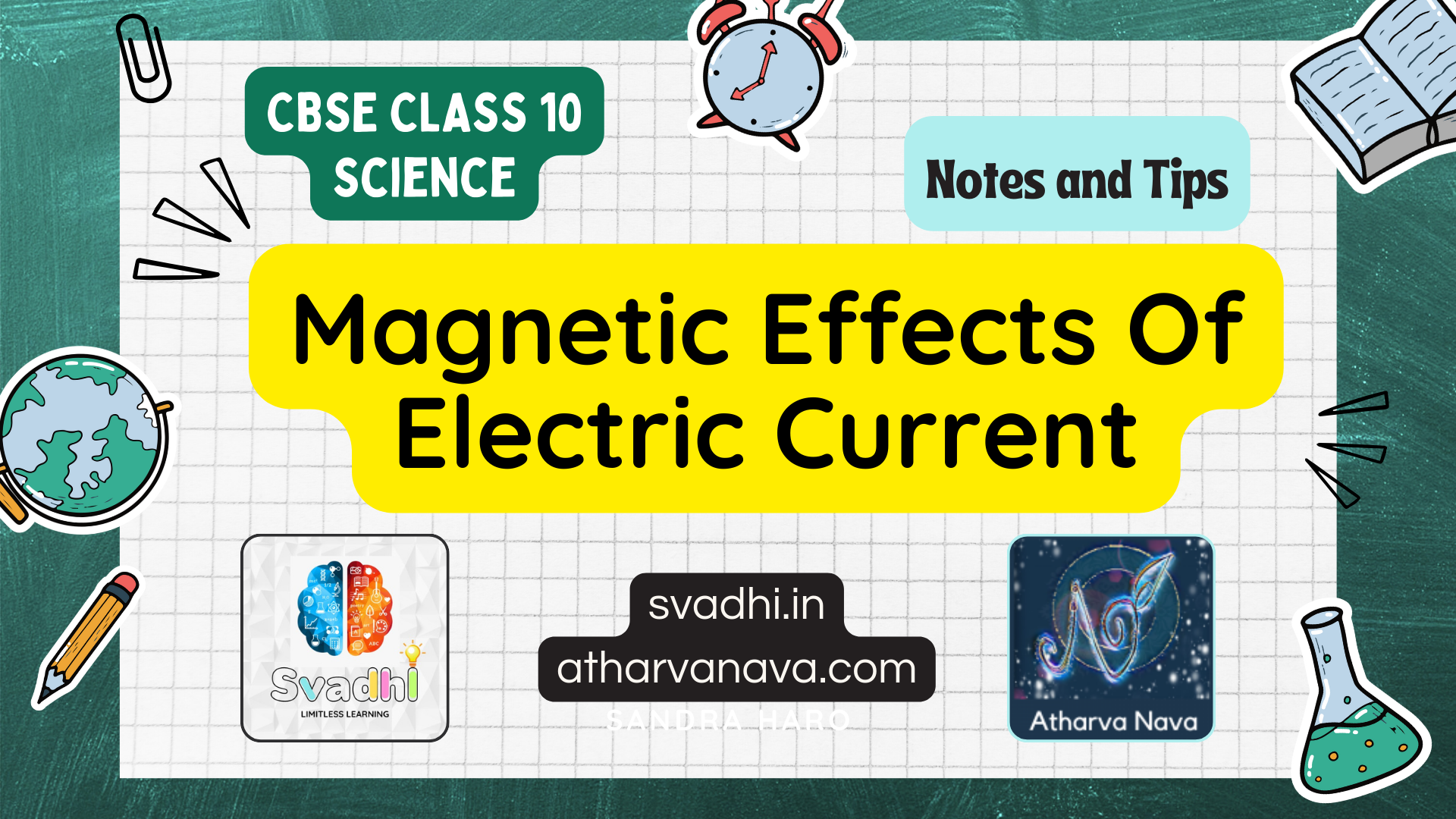
CBSE Class 10 Science – Chapter 13: Magnetic Effects Of Electric Current – Detailed Notes & Explanation
Magnet: Any object that attracts any other objects that are made from iron, nickel, cobalt is called magnet. Uses Of Magnet: Magnetic Field: Magnetic field lines are imaginary lines, which depict […]
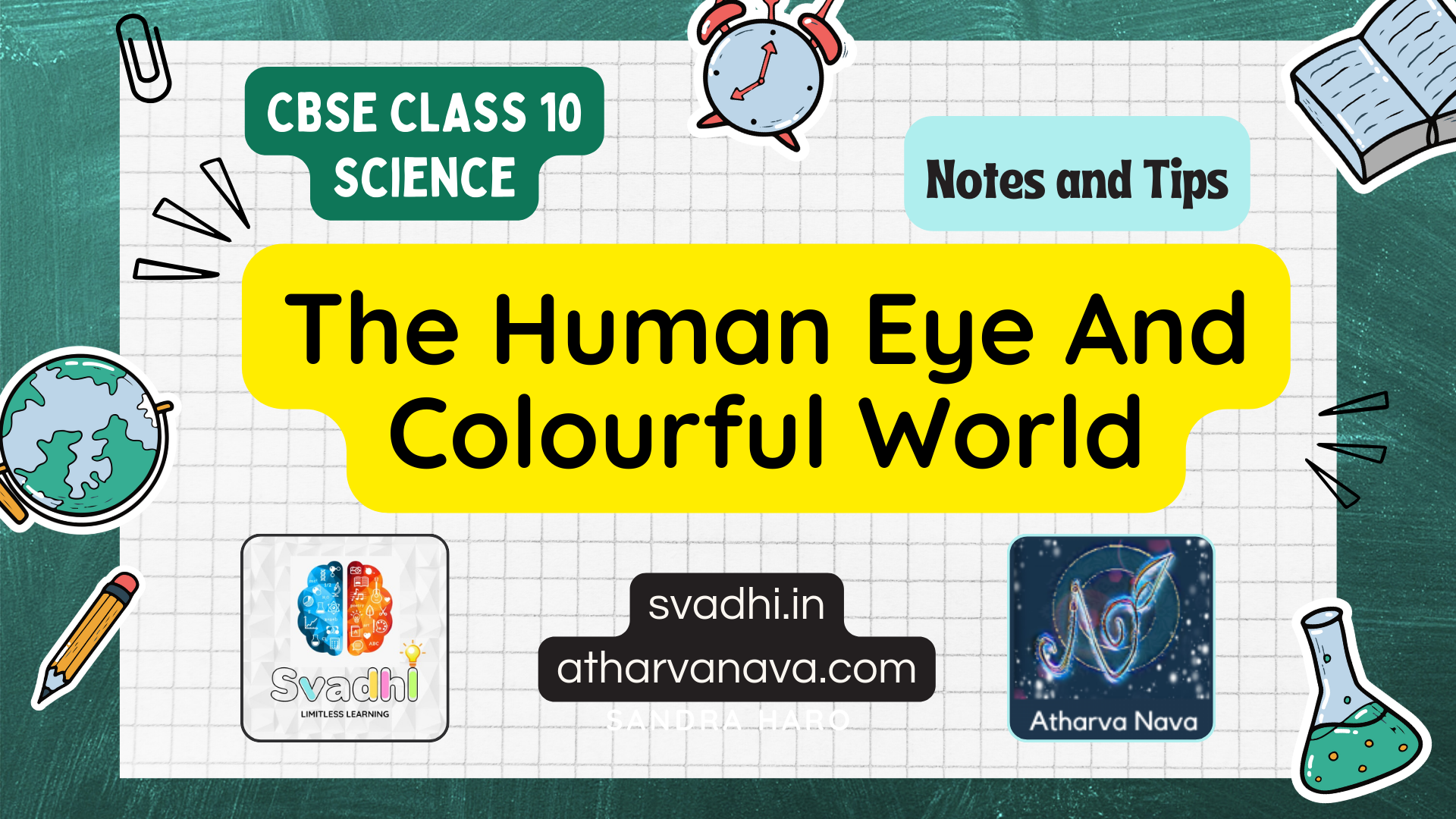
CBSE Class 10 Science – Chapter 11: The Human Eye And Colourful World – Detailed Notes & Explanation
Human Eye: Human eye is a natural optical instrument which is used to see objects by human beings. It acts like a camera which has a lens. Parts of Human Eye […]
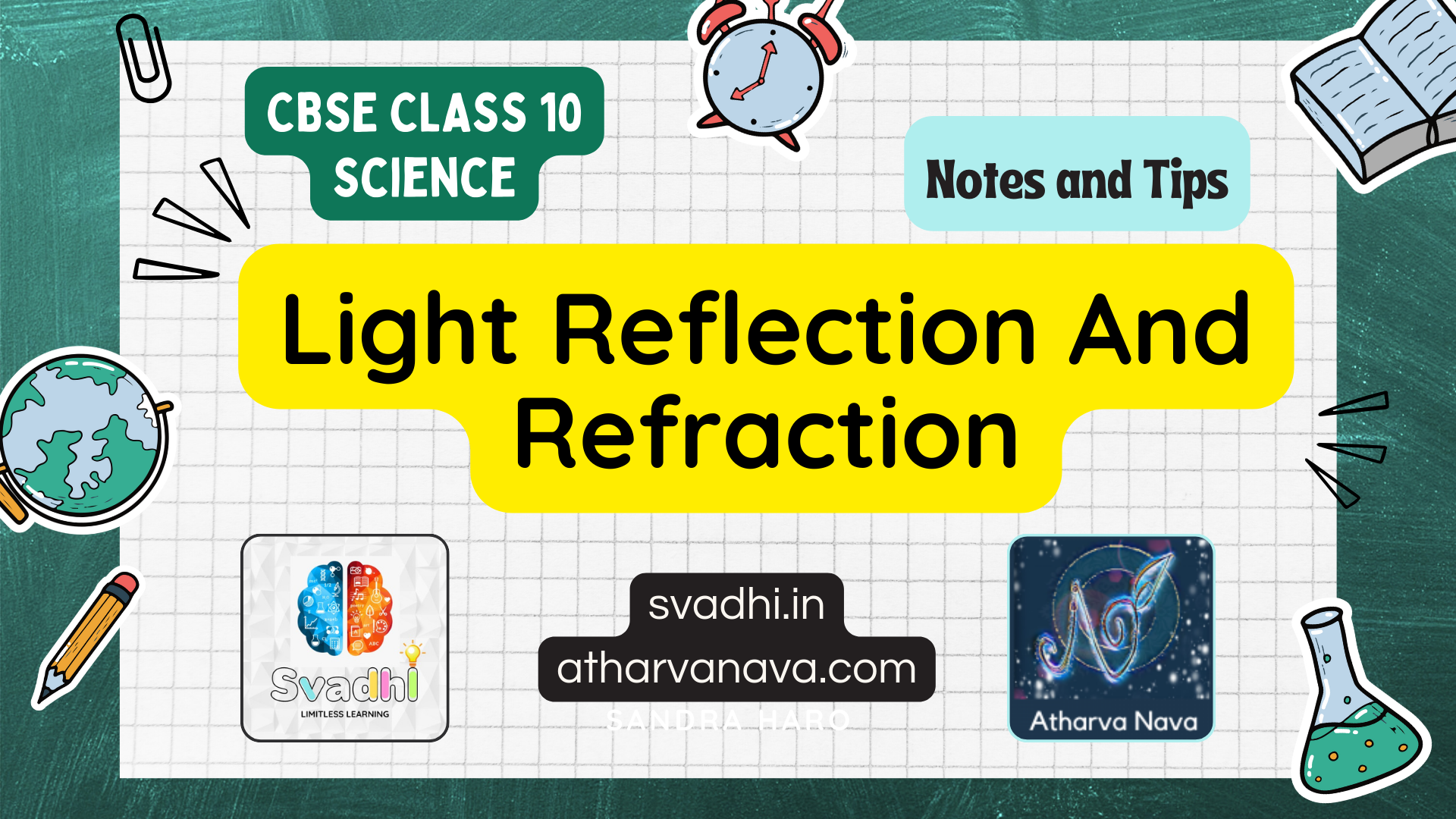
CBSE Class 10 Science – Chapter 10: Light Reflection And Refraction – Detailed Notes & Explanation
Light: Light is a type of electromagnetic radiation that allows the human eye to see or makes objects visible. It is also defined as visible radiation to the human eye. Photons, […]
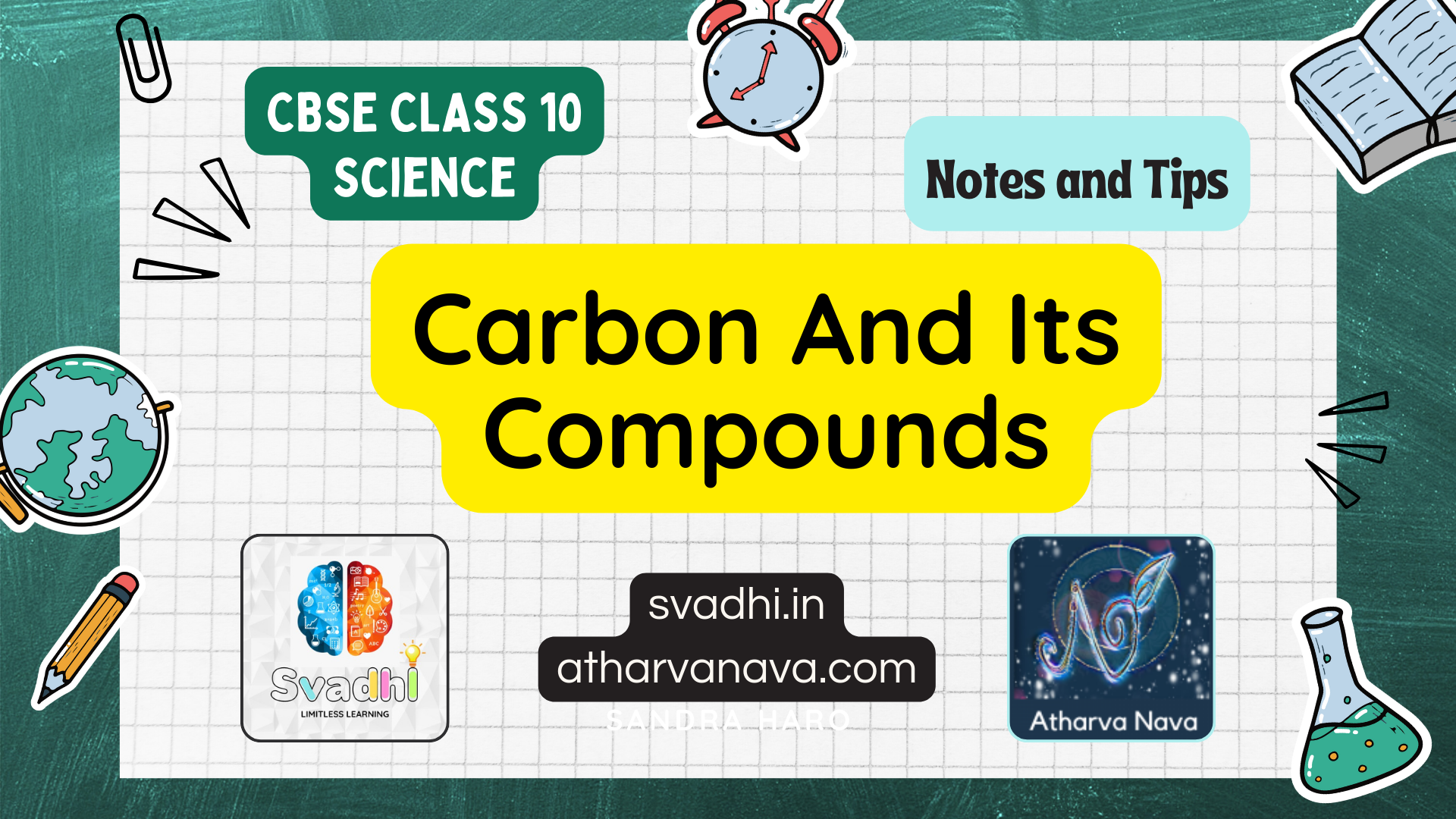
CBSE Class 10 Science – Chapter 4: Carbon And Its Compounds – Detailed Notes & Explanation
Introduction Carbon (non-metal) Latin word Carbon = Coal Earth crust has only 0.02% carbon in the form of minerals. (Like carbonates, hydrogen carbonates, coal and petroleum), and the atmosphere has […]
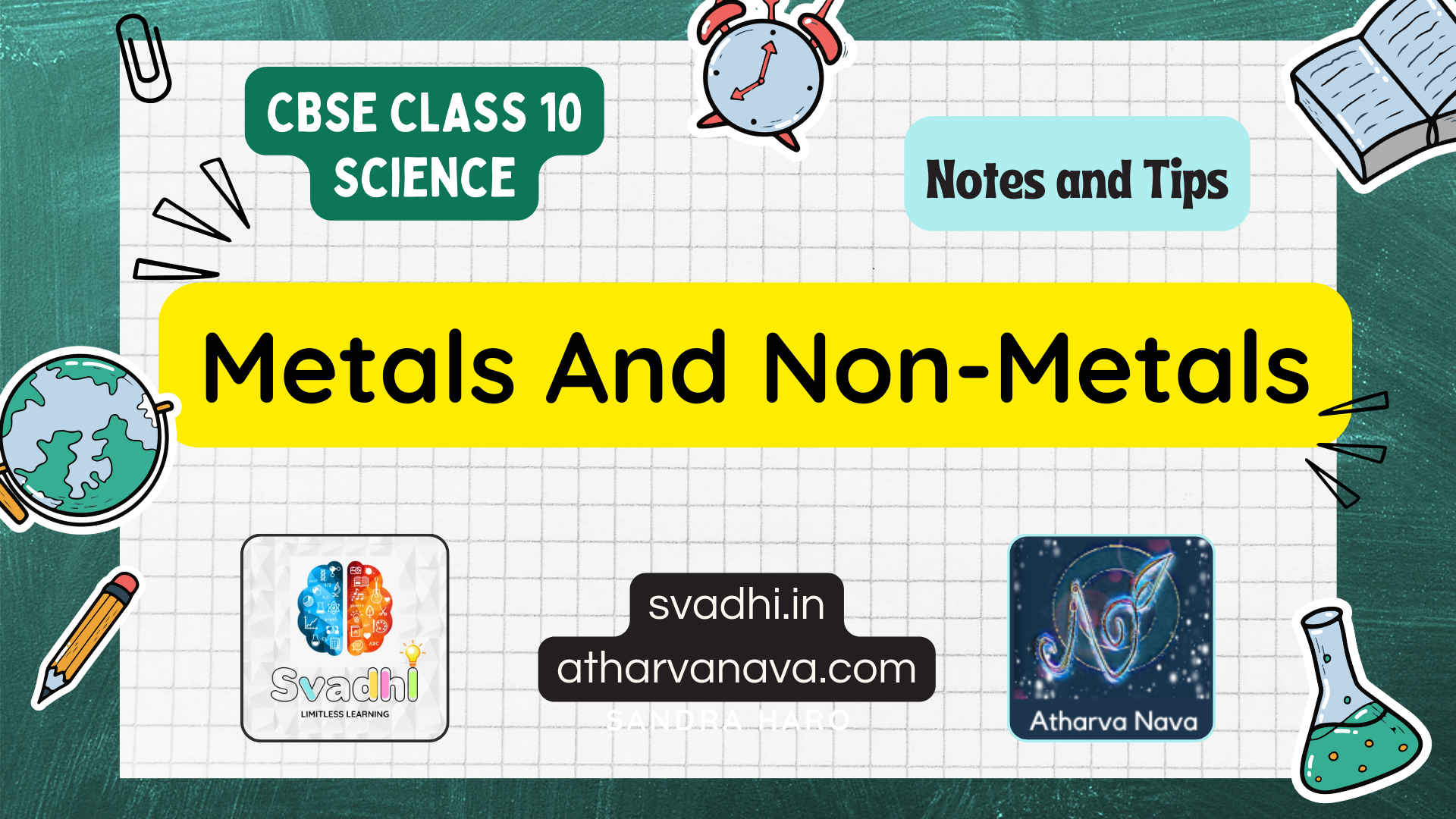
CBSE Class 10 Science – Chapter 3: Metals And Non-Metals – Detailed Notes & Explanation
Introduction Around 114 total elements were present in the periodic table. As of 2016, the periodic table has 118 confirmed elements, from element-1 (Hydrogen) to 118 (oganesson). Elements: (4) new elements […]
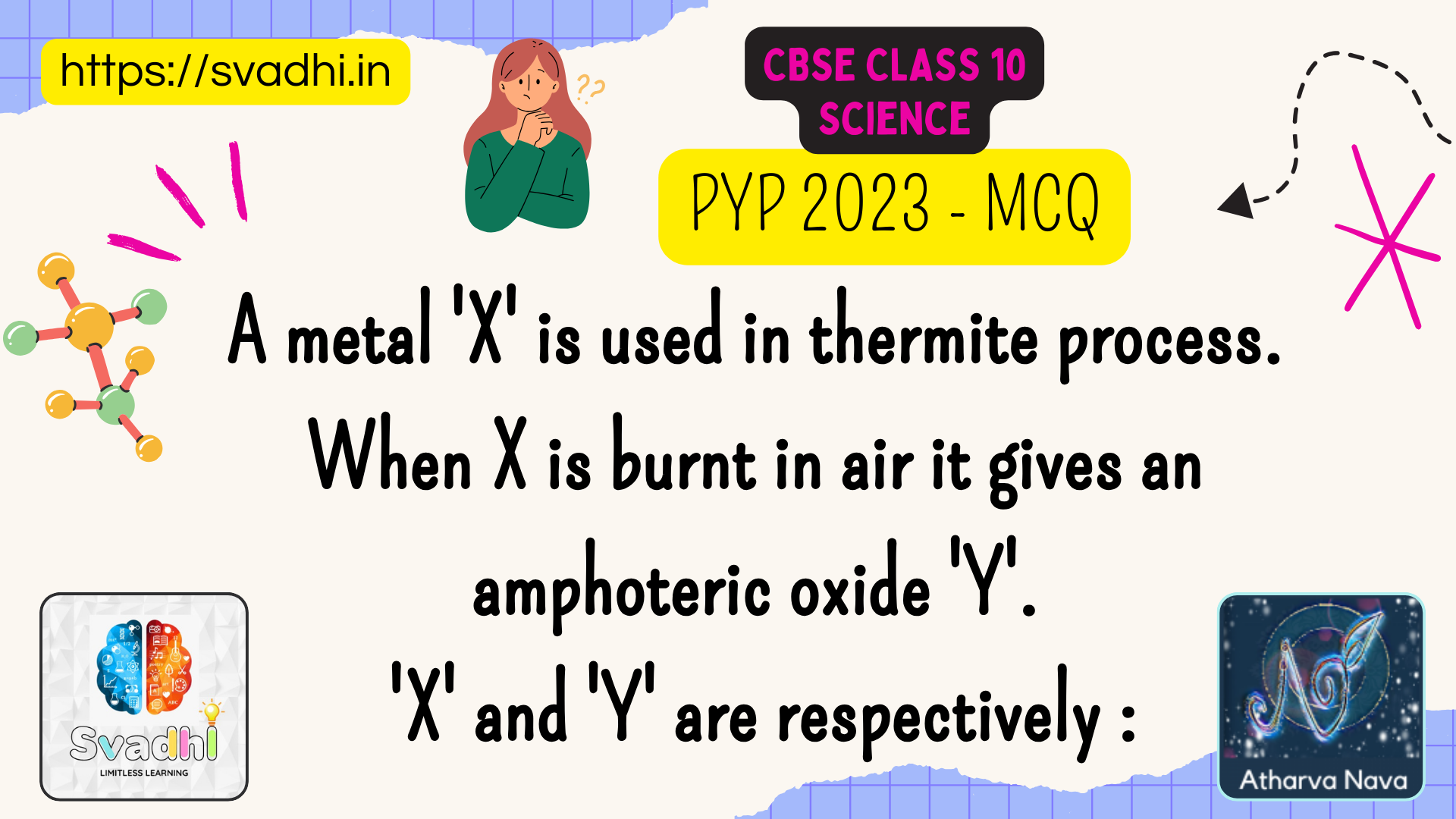
A metal ‘X’ is used in thermite process. When X is burnt in air it gives an amphoteric oxide ‘Y’. ‘X’ and ‘Y’ are respectively :
https://www.youtube.com/watch?v=RD6qPT9rf3g Explanation: Here, the metal used in the thermite process is aluminium (Al). When aluminium is burned in air, it produces aluminium oxide (Al₂O₃), which is an amphoteric oxide. So […]
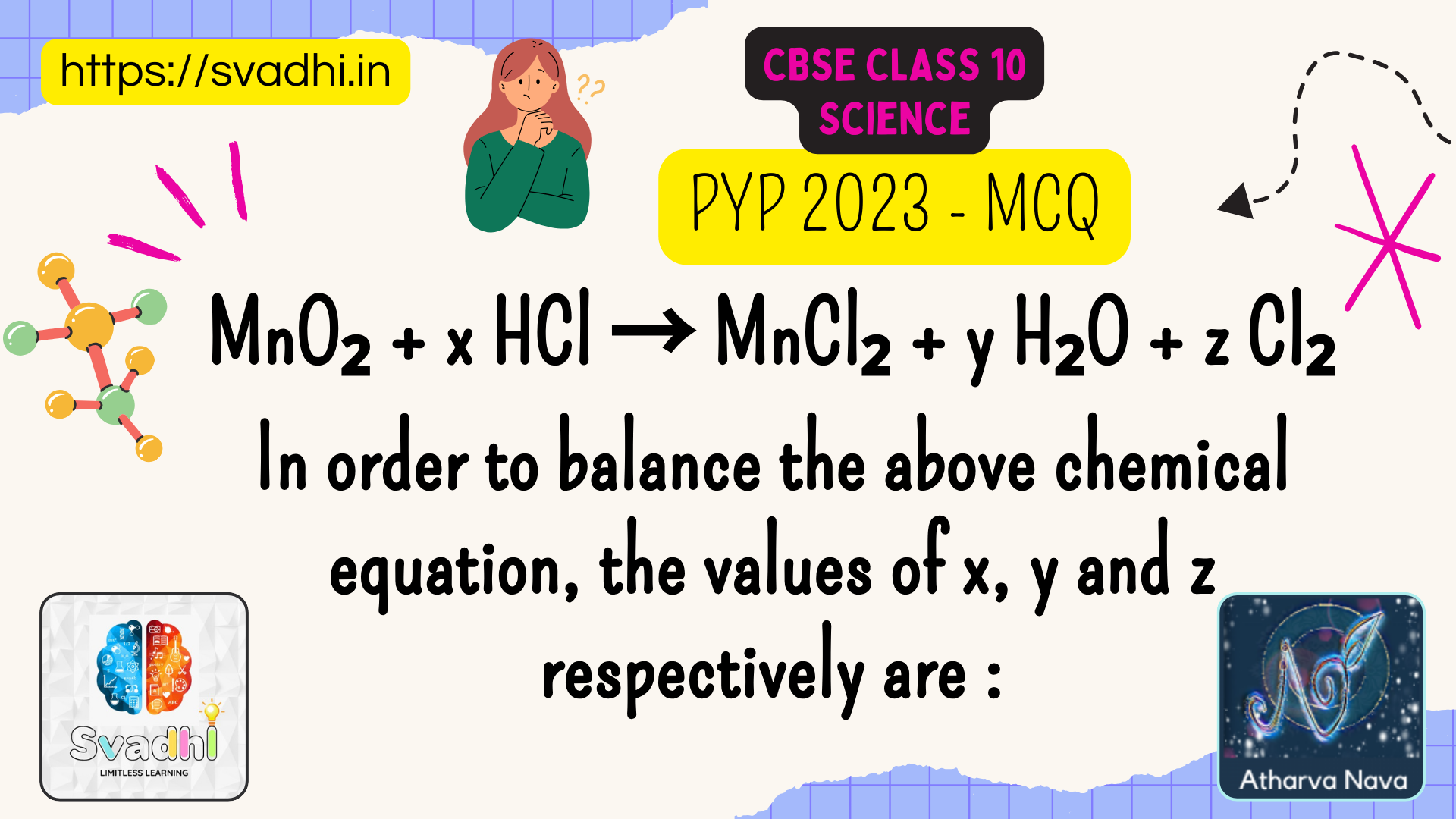
MnO₂ + x HCl → MnCl₂ + y H₂O + z Cl₂
In order to balance the above chemical equation, the values of x, y and z respectively are : a) 6, 2, 2 b) 4, 1, 2 c) 4, 2, 1 […]
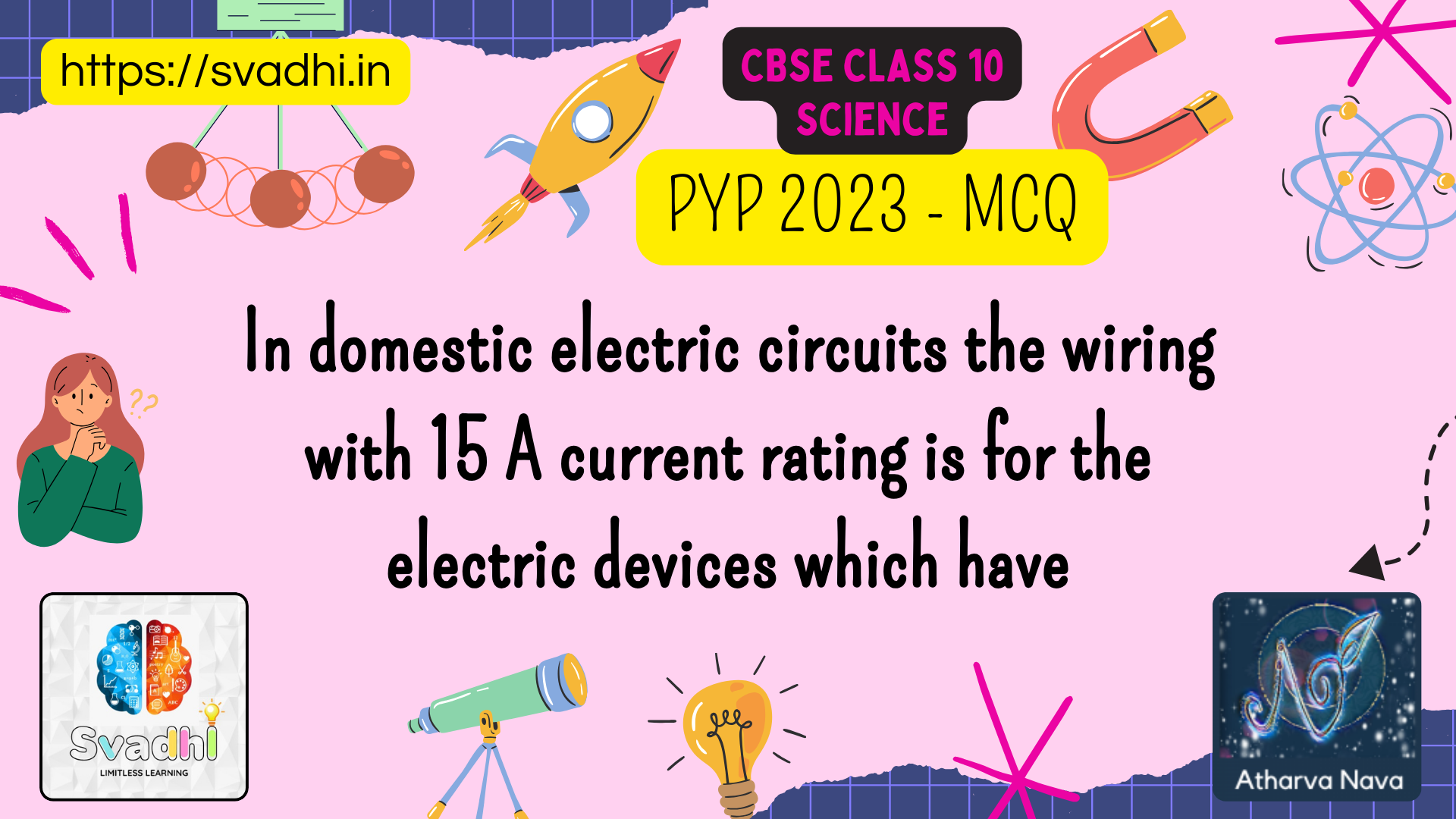
In domestic electric circuits the wiring with 15 A current rating is for the electric devices which have
https://youtu.be/InsmjBcIrY0 This question is about which type of electrical devices are typically connected to wiring with a 15 amp current rating in domestic electric circuits. The answer is (a), higher […]